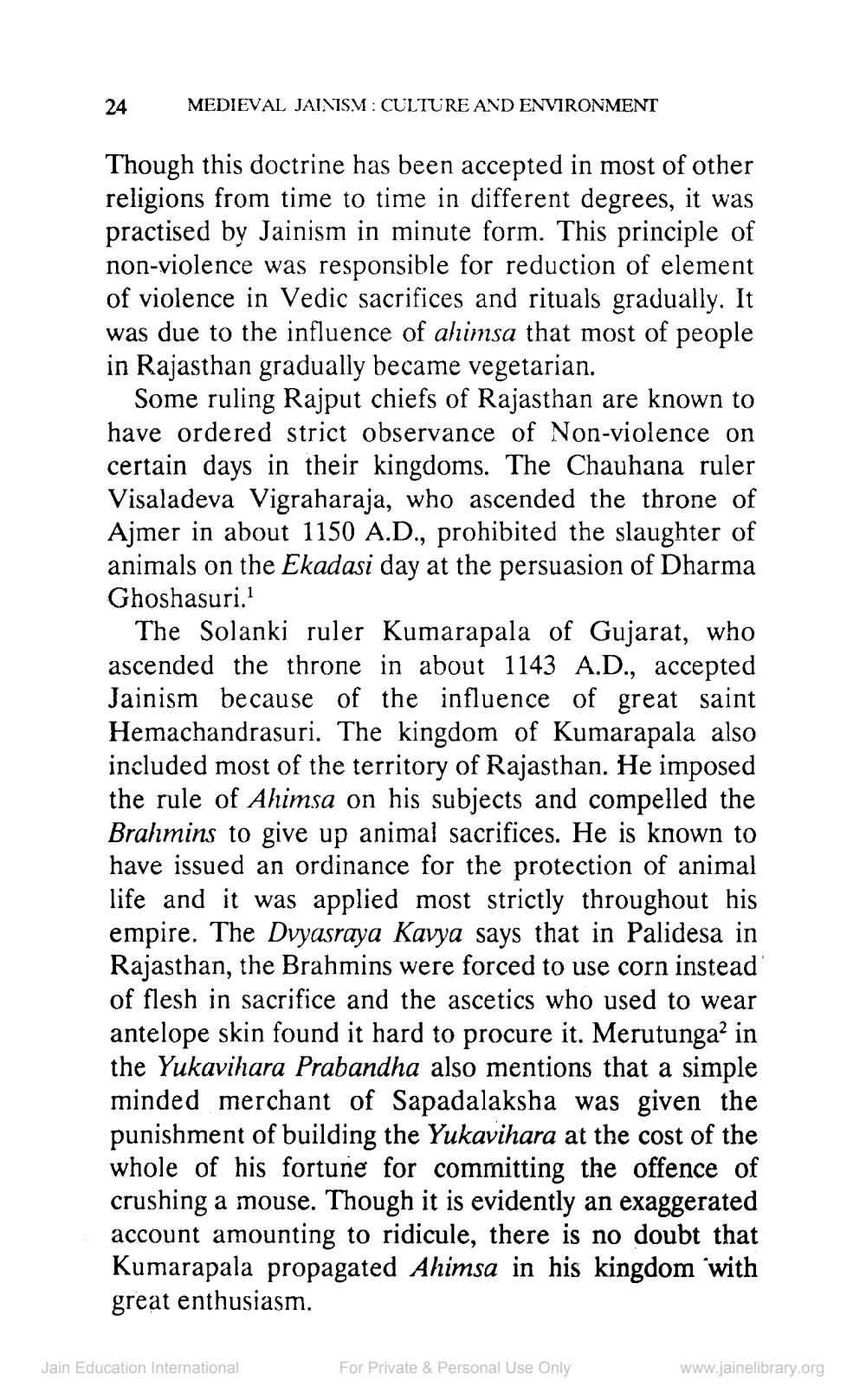________________
24
MEDIEVAL JAINISM : CULTURE AND ENVIRONMENT
Though this doctrine has been accepted in most of other religions from time to time in different degrees, it was practised by Jainism in minute form. This principle of non-violence was responsible for reduction of element of violence in Vedic sacrifices and rituals gradually. It was due to the influence of ahimsa that most of people in Rajasthan gradually became vegetarian.
Some ruling Rajput chiefs of Rajasthan are known to have ordered strict observance of Non-violence on certain days in their kingdoms. The Chauhana ruler Visaladeva Vigraharaja, who ascended the throne of Ajmer in about 1150 A.D., prohibited the slaughter of animals on the Ekadasi day at the persuasion of Dharma Ghoshasuri.
The Solanki ruler Kumarapala of Gujarat, who ascended the throne in about 1143 A.D., accepted Jainism because of the influence of great saint Hemachandrasuri. The kingdom of Kumarapala also included most of the territory of Rajasthan. He imposed the rule of Ahimsa on his subjects and compelled the Brahmins to give up animal sacrifices. He is known to have issued an ordinance for the protection of animal life and it was applied most strictly throughout his empire. The Dvyasraya Kavya says that in Palidesa in Rajasthan, the Brahmins were forced to use corn instead of flesh in sacrifice and the ascetics who used to wear antelope skin found it hard to procure it. Merutunga? in the Yukavihara Prabandha also mentions that a simple minded merchant of Sapadalaksha was given the punishment of building the Yukavihara at the cost of the whole of his fortune for committing the offence of crushing a mouse. Though it is evidently an exaggerated account amounting to ridicule, there is no doubt that Kumarapala propagated Ahimsa in his kingdom with great enthusiasm.
Jain Education International
For Private & Personal Use Only
www.jainelibrary.org




